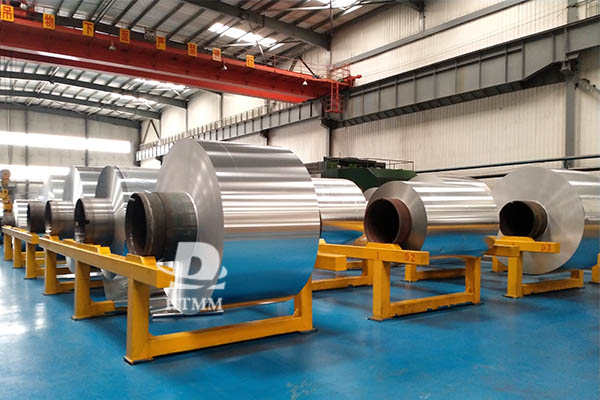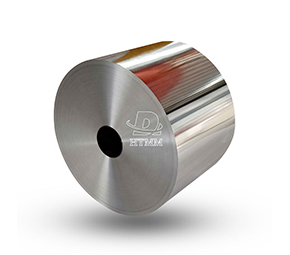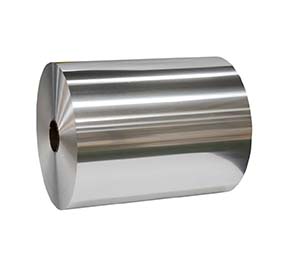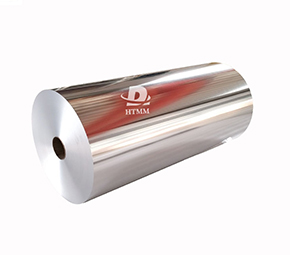
Anyone in the aluminum foil business knows that the issue of roll count and weight sounds simple, but can often be frustrating in practice. Imagine this scenario: A customer orders 50 tons of aluminum foil and asks how many rolls you can produce. If you casually say, "about 100 rolls," you might be surprised when production actually starts—it could be 90 rolls, or even 110 rolls, with a 10% discrepancy being common. Why is this happening? Because aluminum foil is incredibly agile.
The relationship between aluminum foil weight and roll count is similar to that of cooked noodles—the thickness, length, and tightness of the wrapping all affect the final weight. The same weight of aluminum foil can produce significantly different roll counts depending on thickness, width and wrapping tension. For example, 12-micron and 18-micron foils of the same weight may have 30% different roll counts. Even more problematically, roll counts of the same specification of aluminum foil can vary significantly between different factories, creating considerable uncertainty in transactions.
Understanding Aluminum Foil Raw Materials the three main parameters makes the calculation easier
To accurately calculate the number and weight of aluminum foil rolls, you need to master three key parameters: thickness, width, and roll diameter. These three numbers are like Foyle's "identity card," and none of them can be ignored.
Thickness is expressed in microns, with typical values of 7, 12 and 18 microns. The smaller the number, the thinner the foil. Width refers to the width of the foil, usually expressed in mm, such as 1000mm or 1200mm. The roll diameter includes both the outer diameter (OD) and the inner diameter (ID) of the paper core, both expressed in mm.
The calculation formula is simple: weight per roll = 0.785 × (OD2 - ID2) × width × density × thickness. The density of aluminum is 2.7 g/cm2. For example, a roll of aluminum foil of 800 mm OD, 200 mm ID, 1200 mm width and 12 micron thickness will weigh about 1.5 tons. Keep this formula in mind, and you can make a rough estimate for yourself.
Common problems and solutions in real-world operations
In real-world operations, the most common problem is the discrepancy between the quantity of rolls requested by the customer and the actual production quantity. For example, a customer requests 60 rolls per 100 tons but the factory produces 65 rolls as per standard. How should this situation be handled?
First, clearly state the weight of each roll on the contract, not just the total tonnage and the total number of rolls. A better approach would be: "100 tons, 12 microns x 1200 mm, 1.67 tons per roll ±3%, approximately 60 rolls." This creates clear expectations for both parties.
If the customer insists on a certain roll quantity, this can be achieved by adjusting the roll diameter. For example, increasing the outside diameter or decreasing the inside diameter can make each roll heavier. However, be aware that transportation may be affected if the outer diameter is too large, while the inner diameter may affect customer usage if it is too small. Therefore, adjustments should be made appropriately, and it is best to communicate with the customer in advance.
Pay particular attention to the specific needs of different industries. The number and weight requirements of aluminum foil rolls vary widely among industries. Food packaging factories generally prefer smaller rolls under one tonne due to the limited capacity of their slitting machines. The construction materials industry on the other hand prefers larger rolls of 2-3 tonnes to reduce the need for roll replacement.
The pharmaceutical packaging industry has the most stringent requirements, requiring a single roll weight error of no more than ±2%, because of the very high tensile control required in their production lines. The lithium battery industry places particular emphasis on roll diameter durability; Variations of even a few millimeters can affect the yield.
Understanding the customer’s specific application is critical before providing a quote. The same 12-micron aluminum foil roll sold to a food manufacturer may have very different weight control requirements than a lithium battery manufacturer. Understanding the true needs of the customer can help you provide the most appropriate solution.
Future development trends and practical suggestions
With technological advances, the roll count and weight management of aluminum foil is becoming increasingly savvy. Some advanced factories now use laser diameter gauges, which monitor changes in roll diameter in real time and automatically calculate weights to an accuracy of ±0.5%.
Practical tips for sellers:
Get a calculator and memorize a few common roll-sized weights. For example, 12 microns x 1200 mm = 1.5 tons per roll.
The contract must clearly state the weight of each roll; Don't just specify the total tonnage.
In real-world operations, we often need to quickly estimate the number of rolls of aluminum foil. It is especially helpful to remember a few "golden numbers." For 1200mm wide aluminum foil, you can remember it this way:
7-micron thickness: about 0.9 ton/roll → 100 ton ≈ 110 rolls
12-micron thickness: about 1.5 ton/roll → 100 ton ≈ 66 rolls
18-micron thickness: about 2.2 tons/roll → 100 tons ≈ 45 rolls
Although this estimation method is simple, it boasts an accuracy of more than 90%. For other widths, you can quickly convert using this formula: Weight per roll in new width = base weight × (new width / 1200). For example, for a 12-micron aluminum foil 1500 mm wide, each roll weighs approximately 1.5 × (1500 / 1200) = 1.875 tons.
An even more intuitive approach is to imagine aluminum foil as a roll of toilet paper. Thicker foil is more like toilet paper with layers; Naturally, fewer rolls are required for the same weight. Keep this analogy in mind, and you'll be less likely to confuse thickness with the number of rolls when estimating.
Typical Litigation Cases and Regulatory Experience
Last year we faced a typical case: a customer ordered 80 tonnes of 18 micron aluminum foil, requesting 40 rolls (2 tonnes per roll). However, only 38 rolls (approximately 2.1 tonnes per roll) were produced using standard roll diameters during production. The customer refused to accept the shipment citing "insufficient quantity". How did the solution finally come about?
We did three things:
We provided complete production records to prove that the total weight of the 38 rolls is indeed 80 tons.
We explained that 2.1 tons per roll was within the industry’s ±5% tolerance.
We offered two solutions: either ship an additional 2 tons or accept 38 rolls and offer a 2% discount.
Customers ultimately chose the discount option. This case teaches us:
Contracts must clearly state the extent of the tolerance.
Maintaining complete production inventory is critical.
Prepare multiple solutions in advance.
Appropriate concessions can maintain long-term partnerships.
We now include a clause in our contract: "The actual number of rolls is allowed to fluctuate within ±5% of the theoretical value." There has never been a similar dispute since.





